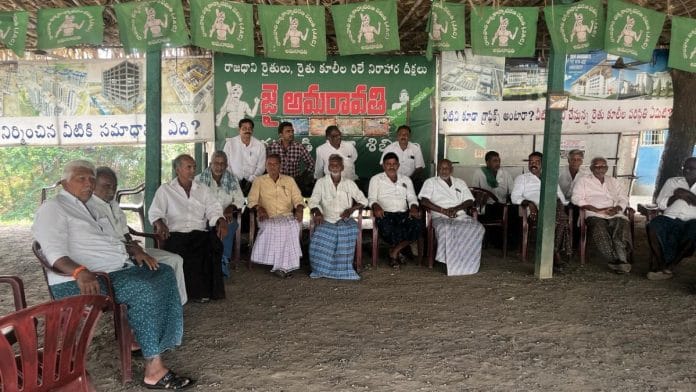Amaravati (Andhra Pradesh): Desolate streets, vast tracts of vacant farmland, partially built structures, and rows of abandoned multi-storeyed apartments as far as the eye can see. These sights greet one entering Amaravati, which not too long ago was touted and being developed as the capital city of Andhra Pradesh.
Once bustling with aspiration and frenzied real estate activity, Amaravati is now struggling to find takers. A thick air of despondency looms over the mofussil city located on the south bank of river Krishna in Andhra Pradesh’s Guntur district.
A 2023 report by the Comptroller and Auditor General (CAG) noted that Rs 10,000 crore has been spent since 2016 to develop Amaravati into a world-class capital city.
However, many projects taken up in 2016 including development of trunk infrastructure such as drainage, roads and power lines have either not begun or were abandoned midway.
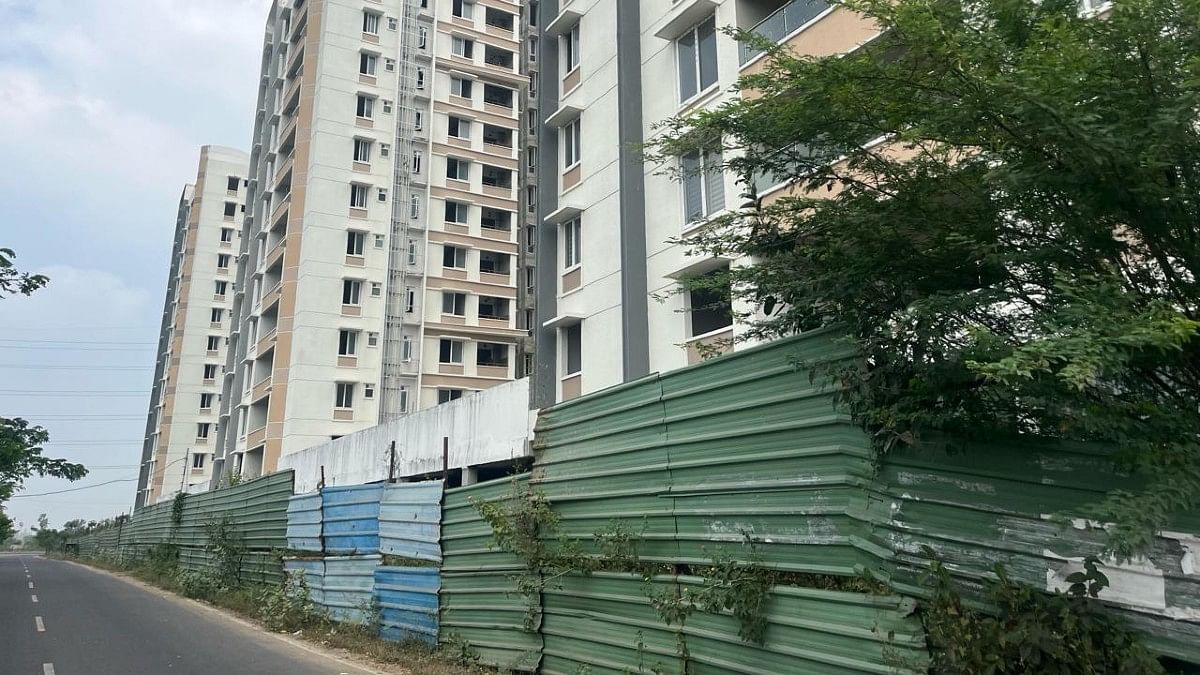
Work to develop Amaravati as capital of the bifurcated state of Andhra Pradesh began in 2016, but ran into a stumbling block after the Y.S. Jagan Mohan Reddy-led YSRCP came to power in the state in 2019 by dislodging the then chief minister Chandrababu Naidu’s TDP.
Back in 2016, Naidu had announced that nine theme cities and 27 townships would come up in Amaravati, spurring frenetic construction.
Once a Master Plan was readied, multilateral agencies including the World Bank and Asian Infrastructure Investment Bank committed to investing Rs $300 million and $200 million, respectively, into the capital. However, both pulled out of the project after a new government came to power in the state following the 2019 assembly polls.
Upon assuming office, Jagan announced a decentralisation plan with three seats of governance instead of one — Visakhapatnam was to become the state’s administrative capital, Kurnool the judicial capital and Amaravati the legislative capital.
The farmers of Amaravati, who had pooled their agricultural land, approximately 34,000 acres, and handed it over to the then Naidu-led government for the development of the capital city, challenged the government’s decision in the high court through a clutch of petitions. The high court in March 2022 gave a verdict in favour of developing Amaravati as the state capital within a stipulated time frame.
The state government subsequently filed a SLP in the Supreme Court challenging the high court’s order. While the apex court stayed the high court’s verdict to develop Amaravati, it did not stay the order declaring Amaravati as the state capital.
With the issue now before the Supreme Court, residents of 29 hamlets in and around Amaravati have been sitting in protest in their respective villages for more than 1,500 days demanding that the government shift the capital back to Amaravati. A makeshift shed has been erected in each village, where villagers gather every day to protest.
“There is nothing to do here today, no employment, nothing. Earlier, all of us had land where we used to cultivate. But we gave our land willingly hoping that development of the capital here would usher in overall prosperity in the area. There will be economic activity around the place, new employment avenues will be generated. But all our hopes lie shattered today,” 35-year-old Narendra Karumanchi, a resident of Velagapudi village in Amaravati, told ThePrint.
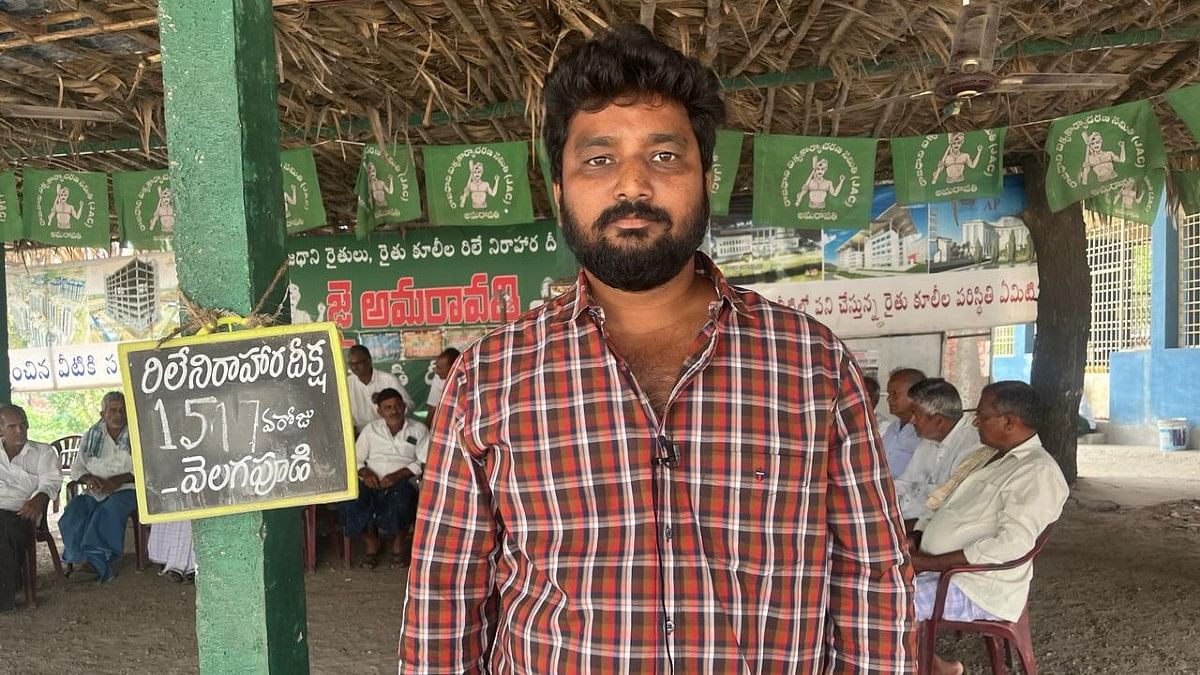
ThePrint reached Audimulapu Suresh, minister for municipal administration and urban development, for comment via calls but had not received a response by the time of publication. This report will be updated if and when a response is received.
Also Read: Stoking ‘public sentiments’ before polls? YSRCP leader wants Hyderabad to remain common capital
Velagapudi: Nerve centre of Amaravati
Had things gone as per Naidu’s Master Plan, Velagapudi village would have become the nerve centre of Amaravati.
Velagapudi is where a government complex housing the Secretariat and Legislative Assembly came up in 2017, three years after the bifurcation of United Andhra Pradesh into two states — Telangana and Andhra Pradesh.
Following the bifurcation, it was decided in 2014 that Hyderabad would continue to be the common capital of both states for the next 10 years (till June 2024). The idea was to give Andhra Pradesh enough time to develop its new capital. But Naidu decided to shift base to Amaravati in 2015 itself.
Among the structures developed in Amaravati thereafter was ‘Praja Vedika’, a convention hall built at an estimated cost of Rs 8.9 crore where Naidu held his meetings.
After Reddy took over, the structure was demolished citing reports of the Lokayukta which found it to violate the Andhra Pradesh (Andhra area) Rivers Conservancy Act, 1884 and the Environment Protection Act, 1986.
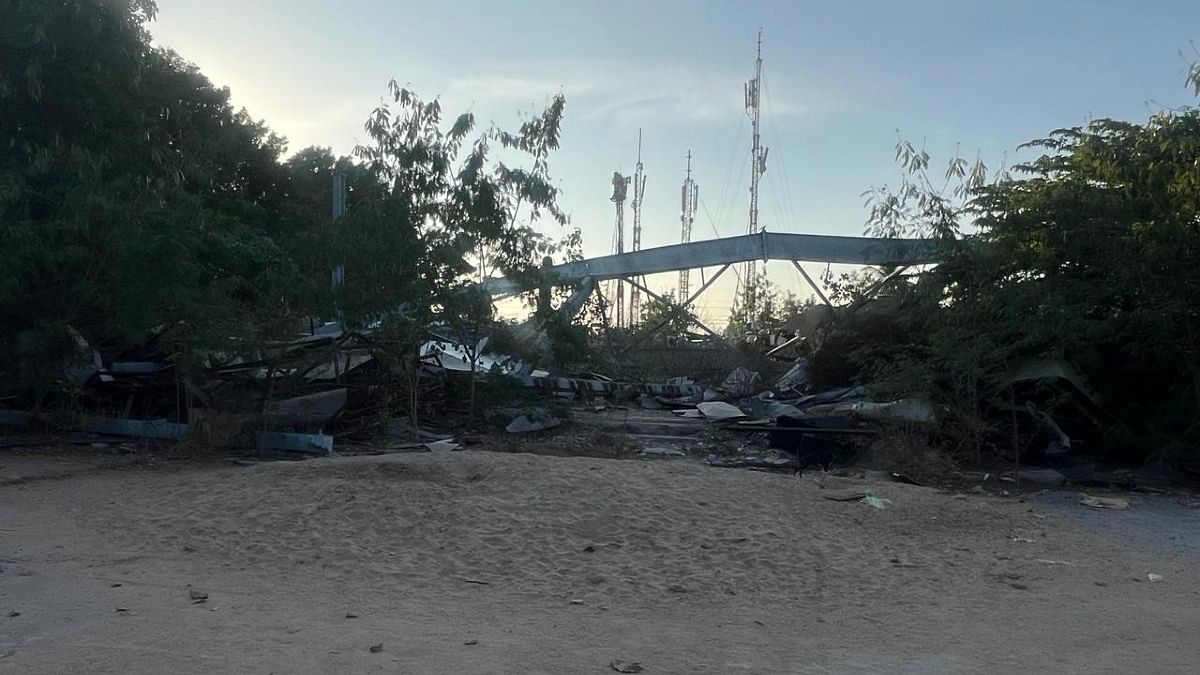
Residents of Velagapudi told ThePrint that the local economy thrived between 2017 and 2019. Many small hotels came up in surrounding villages to accommodate the anticipated influx and locals constructed new houses to rent out, including to government employees and their families.
Cut to February 2024. Except for the Andhra Pradesh Secretariat, where government employees including senior officials come to work from adjoining districts including Vijayawada and Guntur, and the high court, much of Amaravati bears a semblance of an abandoned town.
Though CM Jagan Mohan Reddy has shifted his camp office to Tadepalle, many government offices continue to function out of Vijayawada, located some 20 km away. Tadepalle is also where most government officials live.
A few kilometres from the Amaravati Government Complex, surrounded by abandoned farmland and thick bushes, are six towers of the 12-storey apartment buildings to house Secretariat staff. Completed in 2019, the towers comprising 144 flats have been lying in a state of disrepair since. A lone security guard stands vigil outside the complex.
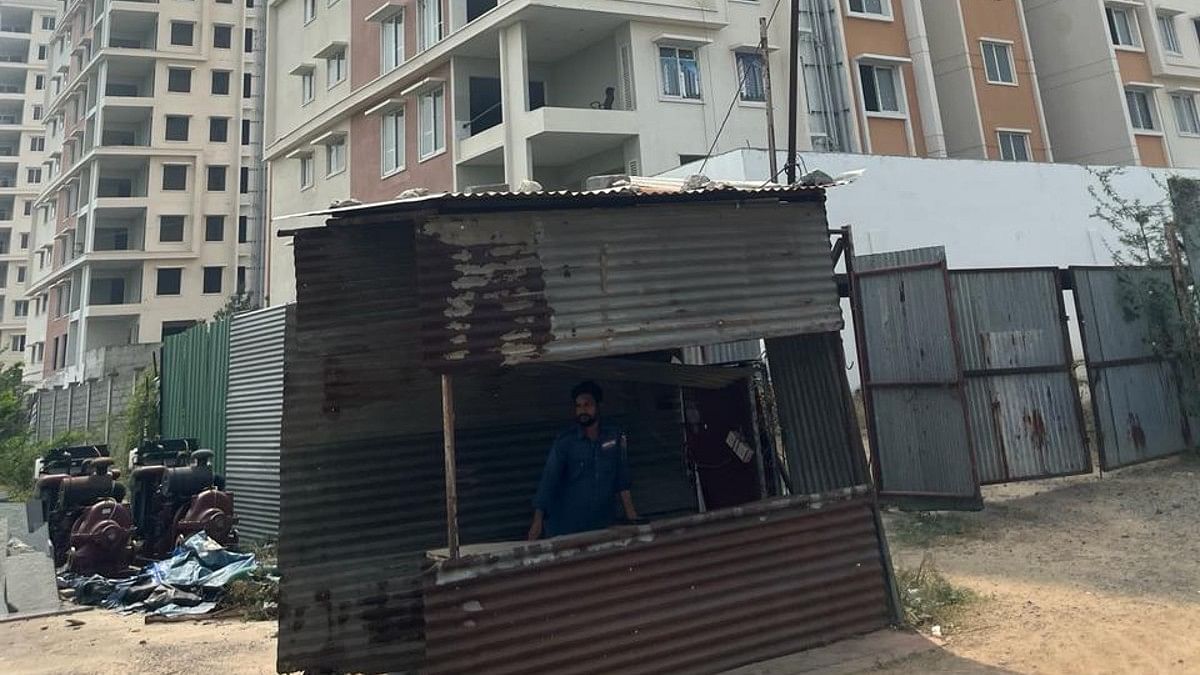
“The housing complex for the All India Service (AIS) officers is in the middle of nowhere. There is no transport, no basic amenities… How can one live here with family,” a government employee posted at the Secretariat told ThePrint on condition of anonymity, adding that the office shuttle is the only way to commute to and from work each day.
As the situation in Amaravati continues to evolve, many are hopeful for a revival of the infrastructure projects that were once promised. The return of political focus on the capital city has reignited discussions about the future of its development.
In nearby Rayapudi village, rows of multi-storeyed apartment buildings, many of them yet to be completed, are jutting out on one side of the road. The housing complex was constructed to accommodate the state’s MLAs and MLCs.
“The structures are 90 percent ready. We don’t know when they will be completed or if anybody will come to live here,” said an official from the Andhra Pradesh Municipal Administration and Urban Development, who did not want to be named.
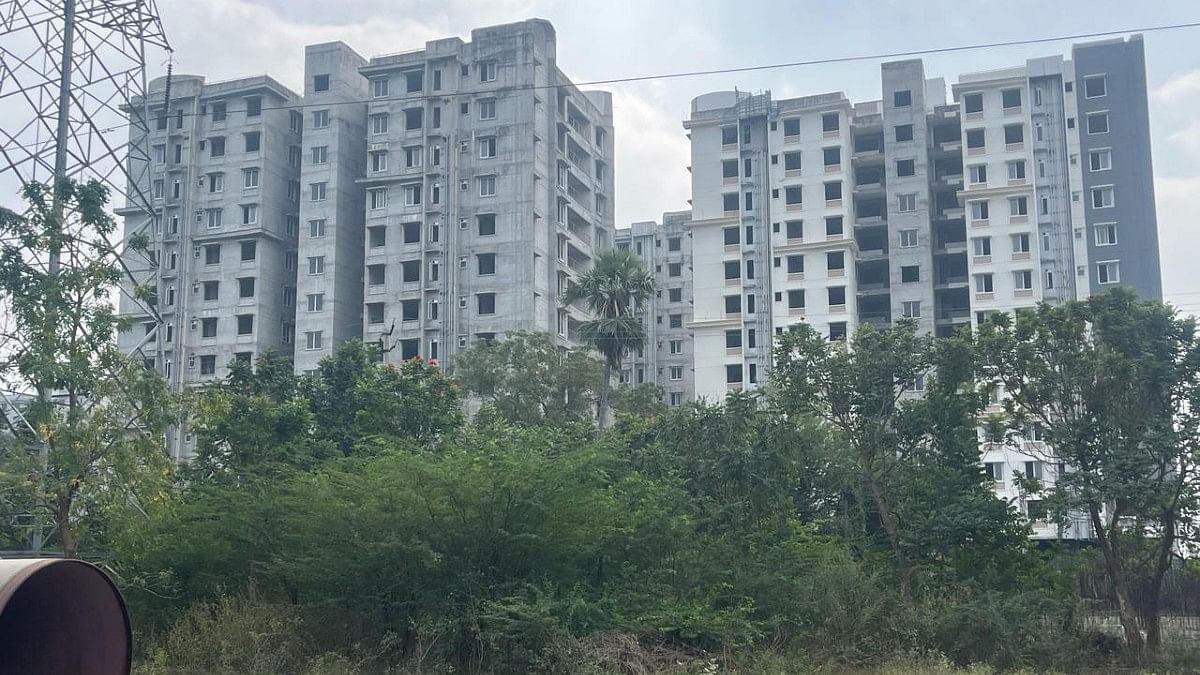
This story also reveals itself in another part of town where partially constructed multi-storey buildings meant to house district and panchayat officials lay abandoned. Besides the housing complexes, work on development of trunk infrastructure including drainage, water supply and laying of underground cables is yet to begin.
“Construction in all these buildings started soon after Amaravati was declared the capital. Just imagine how Amaravati would have changed, the activity that these areas would have seen had people been living in these abandoned structures. All this has been built with public money. Amaravati is a living example of how public money has been wasted,” Narendra Karumanchi, a resident of Velagapudi village, told ThePrint.
Since 2016, three private universities have also come up in Amaravati including SRM University and Vellore Institute of Technology. “But most of the students prefer to stay in nearby districts and commute from there instead of living in Amaravati,” Karumanchi added.
Annuity payments, ‘paucity of funds’
For more than 1,500 days now, villagers of 29 villages in and around Amaravati have continued with their protest, demanding that the state government reconsider its plan to develop three capital cities.
Dhanekula Laxmi, a resident of Nelapadu, one of the 29 villages, told ThePrint that she gave two-and-a-half acres for development under the land pooling scheme in 2014-15.
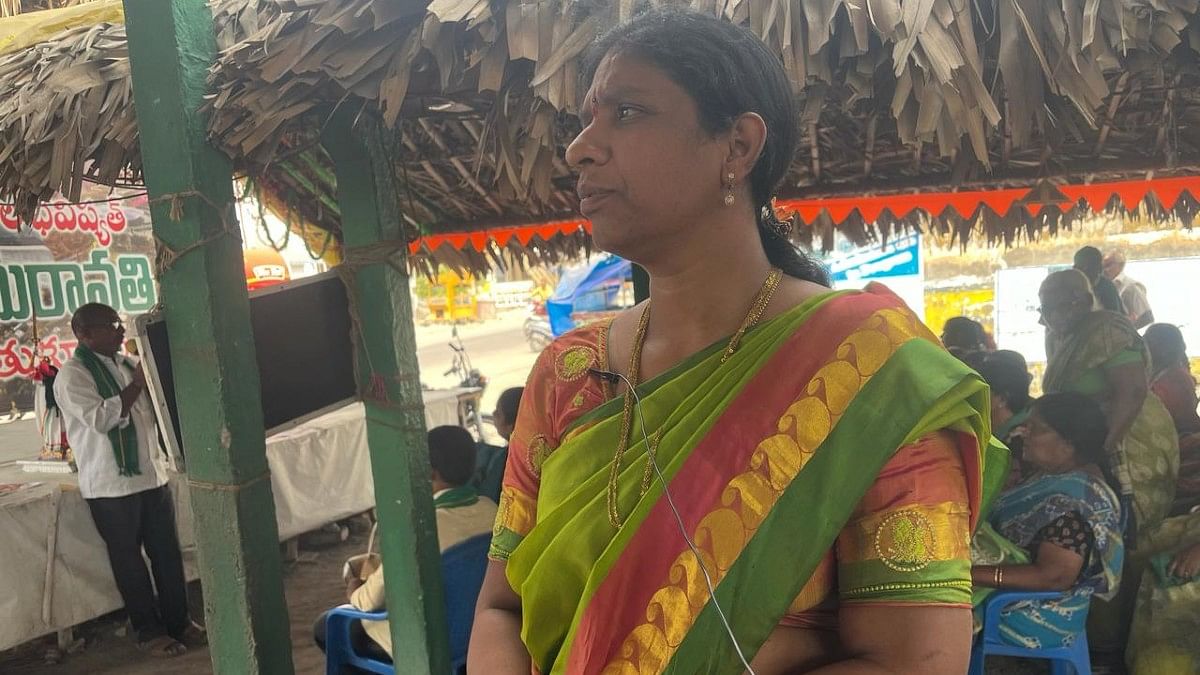
“We are farmers. We got income from our land. But now there is only a small amount of land left. How will we earn our living? I have two college-going children. I have been running my family with whatever little income comes from my farm and renting out a part of my house,” she said.
Laxmi was one of the villagers who had come to Thullur village to join the protest when ThePrint visited in the third week of February.
Karumanchi, quoted earlier, said most of the land they pooled and gave to the government today lies abandoned. “All the private developers, who had come initially, have left,” he said.
Not only is the work stalled but the government too went back on its word, he added. “Of the total land every villager gave under the land pooling scheme, the government had to return 25 percent to the villagers after developing it, while keeping 75 percent. Till the time 25 percent of the land was returned, villagers had to be given annual payments of a fixed amount. Since last year, our annuity payment too has been stopped.”
Villagers say property prices in Amaravati, which skyrocketed since the announcement that it would be developed as the capital, have since crashed.
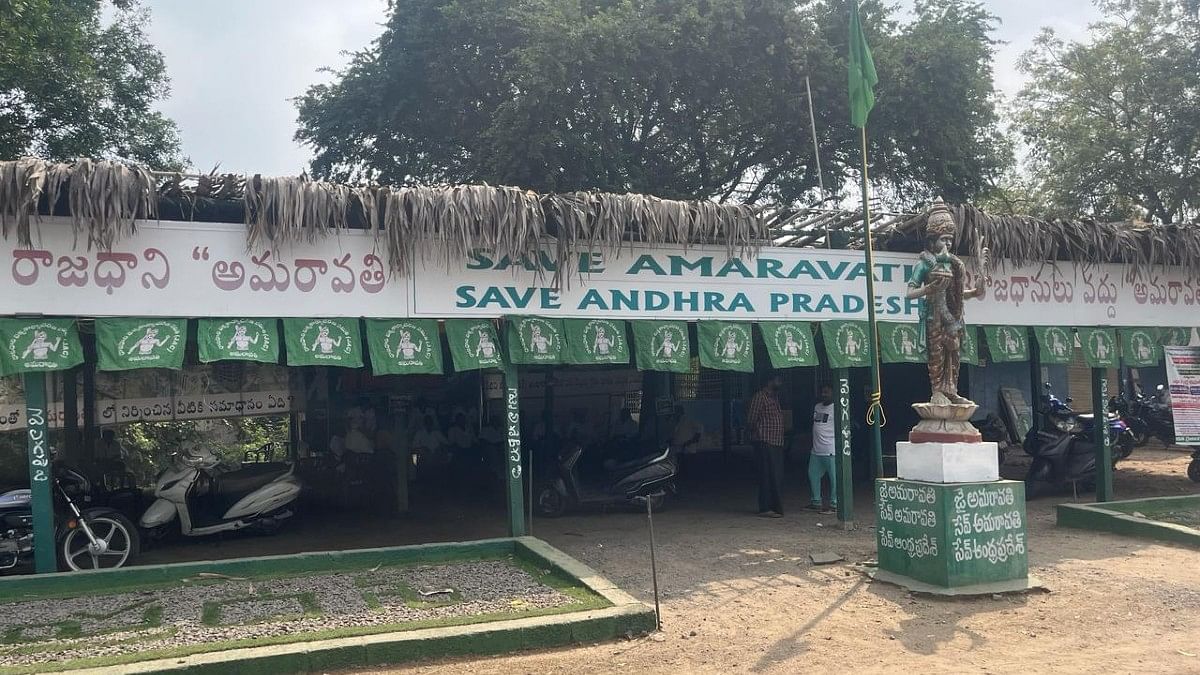
A 2023 CAG compliance audit report on the development of Amaravati as the capital pointed out that a total of 57 infrastructure packages worth Rs 33,476.23 crore were awarded by the state government between July 2016 and February 2019. The plan was for these projects to be completed by November 2021, but they remain incomplete despite the exchequer having incurred a hefty cost of Rs 4,901.67 crore, the report added.
The CAG report also said that as against the requirement of Rs 55,343 crore worked out for the 2016-2023 period, APCRDA raised just Rs 11,487.16 crore from all sources. “The Government of Andhra Pradesh has neither provided budgetary support as per the financial plan brought out nor released grants as planned (after February 2019),” it said.
A senior official of the Amaravati Metropolitan Region Development Authority, previously called Andhra Pradesh Capital Region Development Authority (APCRDA), conceded that very little has been done to develop the city as the capital since 2019.
“There are a host of issues behind the delays. Paucity of funds is one of the main reasons. Also, as of now there is no clarity on future course, as far as development in Amaravati is concerned,” the official, who did not want to be named, told ThePrint.
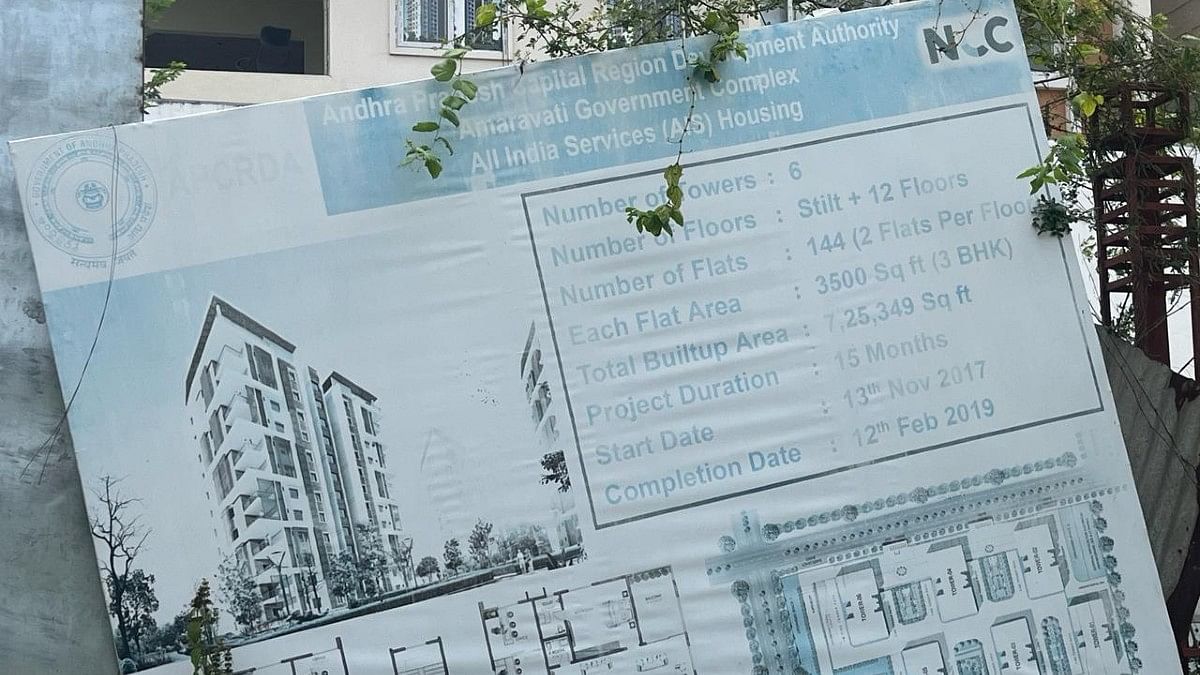
The official added that so far approximately Rs 10,000 crore has been spent on the development of Amaravati.
“Total area in Amaravati that was to be developed was 50,000 acres. Of this, over 34,000 acres were pooled land of villagers while the remaining was government land. We have planned for the development of the entire area, including building roads, providing water supply, drainage facilities, electricity, etc. These are capital-intensive works requiring huge amounts of funds,” said the official.
The official also admitted that villagers who gave away their land have not been paid their annuity since last one year owing to “scarcity of funds”.
A second official of the Municipal Administration and Urban Development department, who did not want to be named, said they are hopeful of more clarity after the state elections scheduled to take place in April-May.
The residents too also pinned their hopes on the elections. “We are hoping that once a new government is formed, they will take a decision on Amaravati,” said Karumanchi.
(Edited by Amrtansh Arora)
Also Read: How Andhra CM Jagan & rival Naidu are trying to get divinity on their side ahead of assembly polls



